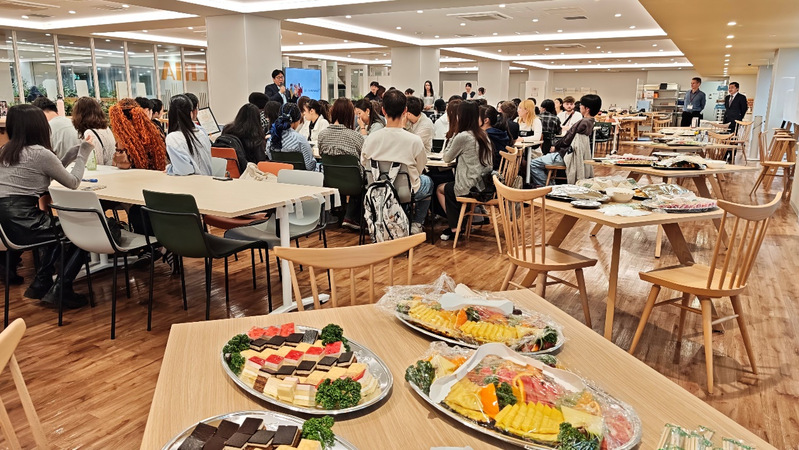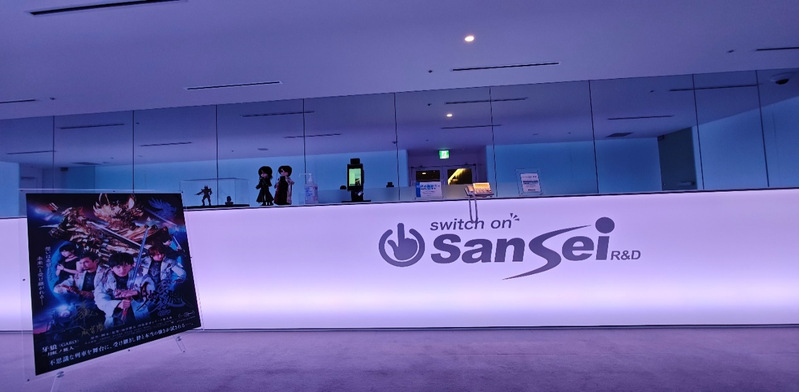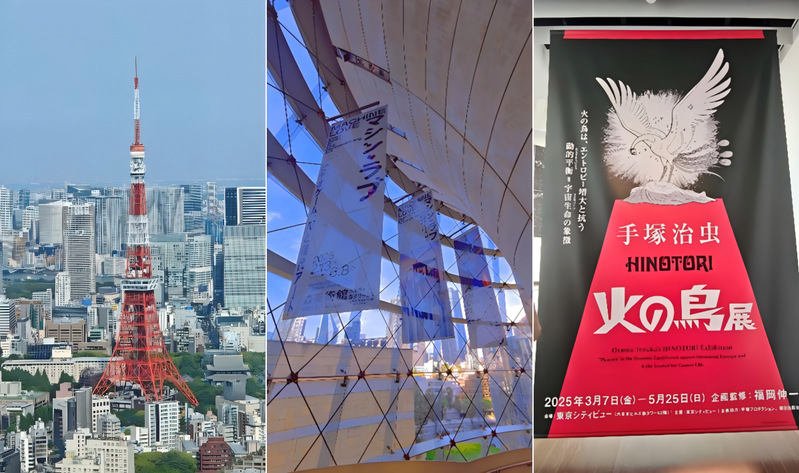On May 11, a Japanese visiting group from the Professional Degree Education Center of the Business School of USST including teachers and students of international business majors, arrived in Tokyo and embarked on an 8-day visit to study. This visit to the school is centered on issues such as corporate management innovation, aging social response, and cross-cultural collaboration. Through academic course lectures, corporate field visits and cultural practice activities, it systematically analyzes the experience paradigm of Japanese industrial development, focusing on improving teachers and students' international management vision and innovative practice ability. The itinerary focuses on Japan's typical practices in the fields of refined management, silver economic response strategies, and cross-border collaboration models. It deeply explores the logic and paths behind it, injecting new vitality into cultivating high-level management talents with global strategic vision, and helping teachers and students accumulate cutting-edge cognition in the fields of cross-cultural management and industrial innovation.

At the welcome dinner, students from USST, teachers and students from the US visiting program and representatives of Sakura Merrill Lynch University gathered together. Teachers and students from China, Japan and the United States used social games to engage in ice-breaking interactions, completed cross-border team tasks through body language collaboration, and shared their respective academic backgrounds, cultural customs and life experiences. In a relaxed and pleasant atmosphere, cultural barriers gradually melted, and mutual friendship and understanding were further deepened. These interactive achievements laid a good foundation for future international cooperation and research.

The first course of the teaching activity was taught by Han Xiaohong, a special MBA professor at Sakura Merrill Lynch University, and the theme was Evolution and Management of Japanese Enterprise Supply Chain. The course system analyzes the basic theories of supply chain management, the application of different models and the dynamic evolution of Japanese corporate supply chains. Taking Toyota Production Mode (TPS) as the entry point, it focuses on analyzing this most representative supply chain management model in Japan, emphasizing the core role of lean production (Lean Production) and Just-In-Time (JIT) in improving operational efficiency and its resilience value in global competition, and guides students to think about how modern enterprises can build a flexible and innovation-driven supply chain system.The second class was held by Dong Guangzhe, a special professor at Sakura Merrill Lynch University, on the topic of The Form of Employment and Remuneration Changes in Japanese Enterprises, starting from the evolution of Japan's employment system, and deeply analyzes the structural challenges of an aging society. He compared the survival status of the lifelong employment system and the informal employee group, and explained in detail the social impact of the change in employment patterns after the bursting of Japan's bubble economy, as well as the contradictions and policy response logic in the labor market, such as extending the employment years of older groups and enhancing women's workplace participation.At the same time, the course further explores the inspiration of Japanese workplace culture on modern organizational management, which triggers students' in-depth thinking on the development of China's silver economy and the trend of flexible employment, and helps students understand the change logic of Japan's workplace and social structure. The third class was held by Professor Ken Kaneyama of Sakura Merrill Lynch University as a visiting group with the title Overseas Development of Japanese Enterprises.
As a senior scholar in the field of Japanese corporate strategy research, Professor Ken Kaneyama, based on typical examples, systematically expounded the practice of Japanese companies in integrating into the global value chain through industrial transfer, capital export, mergers and acquisitions and integration, and focused on analyzing their strategic adjustments in the context of geopolitical changes, technological revolution and green transformation. In the course, Professor Ken Kaneyama focuses on corporate strategic transformation under globalization, focuses on key points such as balance between localization and globalization and green development, and combines the overseas expansion cases of Japanese companies, and tells the process of enterprises reshaping their overseas layout through capital mergers and acquisitions, cross-cultural management and other methods. The course content stimulates teachers and students to think deeply about topics such as the balance of localization and globalization, intercultural management adaptability, and China-Japan enterprise cooperation prospects, lay a solid theoretical foundation for future participation in cross-border operations and international cooperation, and also provides theoretical support for students to broaden their international horizons.

During the visit, teachers and students visited Obirin Garden Hills, Japan's first continuous nursing retirement community (CCRC) linked to universities. This innovative elderly care project breaks the traditional framework and builds a lifelong learning ecosystem through community interaction, cross-generational exchanges, and integration of education and medical resources, significantly enhances the social participation and belonging of elderly residents, and realizes the transformation from care to empowerment elderly care model. Students said that this model focuses on the reshaping of the value of the elderly and provides important inspiration for the domestic response to the aging social problems.

During the practical activities, in order to explore the coordinated development mechanism of the global creative industry, the visiting group visited Sansei Co., Ltd., a well-known Japanese game equipment manufacturer. By observing classic arcade equipment and immersive interactive devices, teachers and students deeply understand their innovative model of hardware + animation IP integration and learn user behavior data feedback mechanism, IP authorization cooperation system and two-dimensional community operation strategy. During the visit, everyone personally felt the core logic of experience empowerment and emotional brand building in the digital entertainment industry, and realized that the future trend lies in the deep integration of technology and culture. Users are both consumers and content co-creators. At the Tokyo City View Observatory in Roppongi Hills, the visiting group overlooks the panoramic view of Tokyo and intuitively experiences Japan's efficient and intensive urban management logic from the dense urban context. Afterwards, teachers and students visited the Firebird theme exhibition of Mori Art Museum. The exhibition uses Osamu Tezuka's epic comics as a carrier, and explores the essence of life, the philosophy of reincarnation and the value of existence through the perspective of time and space intertwined, which triggers everyone's deep thinking about life management and humanistic care.

During the cultural exchange activities, teachers and students visited cultural landmarks such as Ueno Zoo, Tokyo National Museum and Sensoji Temple. At Ueno Zoo, members of the visiting group explored from the perspective of management how to balance scientific research conservation and commercial value through brand operation and public education, providing a sample for sustainable development; the exhibition collections in the Tokyo National Museum vividly present the integration of East Asian culture and local innovation; the Leimen Lantern and Nakamise Shopping Street in Sensoji Temple show the cultural accumulation from the Edo period to the present. By experiencing kimonos, handicrafts and special food, students on the spot analyzed in depth how the traditional cultural and tourism industry can achieve sustainable development through business model innovation and tourist service upgrades, thereby providing cross-domain inspiration for the path of cultural inheritance and commercial vitality. In addition, the students climbed the Tokyo Tower to overlook the panoramic city and personally understood the collaborative design thinking of efficient and intensive and humanistic care in Japan's compact city concept.
Written by: Zhang Zhebin,Zhang Yuefeng (Master of International Business Major 2024)
Time: May 22, 2025

